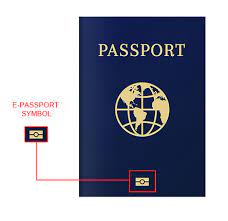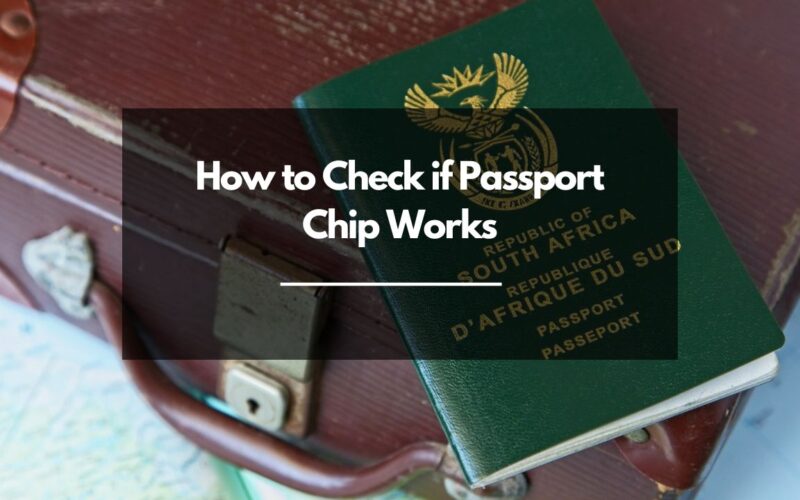As an Amazon Associate, I earn a small commission from qualifying purchases. Learn more about this.
A passport in the 21st century is more than just a booklet with stamps; it is a compact, data-stuffed chip that holds critical information, making it a significant asset for modern travelers. But what happens when this tiny piece of technology decides not to cooperate? It can be frustrating no doubt, but let’s go over it.
How to Check if Passport Chip Works
Before we jump in, let’s understand what this chip does.
Passports chips are not just any chip; They’re an RFID (Radio Frequency Identification) chip that stores your biographic information and a digital photograph.

This data is the same as what you’d find on the passport’s photo page. But the beauty of this technology is that it can be read wirelessly, which means quicker processing times at immigration control.
Now, to the main point of the article…
Checking the functionality of the chip can be a bit tricky, mainly because the information on the chip is encrypted to protect your data. However, there are a few signs that could indicate a issue.
Firstly, if you consistently face delays or issues at the automated e-passport gates at airports.
These gates are designed to read the chip in your passport instantly, but if your passport is repeatedly rejected or takes longer than usual to process, it might mean your chip is malfunctioning. Or maybe, it no longer works.
You can also use an NFC-enabled smartphone to check this.
There are several apps available on both Android and iOS platforms that can read the data on your passport chip.
By simply placing your passport on the back of your phone, these apps can access the chip and display the data stored on it. If they can read the data, your chip is working.
Of course, it’s important to mention that if you have any doubts or concerns, the best course of action is to contact your local passport issuing authority. They have the right tools to check the chip and can provide you with an accurate answer.
What to Do if Your Passport Chip is Not Working?
Imagine you’ve tested your passport chip, and, unfortunately, it doesn’t seem to be functioning.
Well, there’s mostly no need for a panic – as your passport should still be valid even if the chip is faulty. But it’s wise to address the issue sooner rather than later, as a non-working chip can sometimes complicate your travel plans.
Your first course of action should be to contact the passport issuing authority in your country.
They’re your go-to source for all things passport-related, including chip issues. They’ve likely dealt with numerous cases similar to yours and will guide you through the necessary steps.
Generally, if the chip is indeed non-functional and hasn’t been physically tampered with, you’ll need to apply for a passport replacement.
Each country has a specific process for this, so it’s important you follow the instructions given by your national passport authority. They’ll guide you through the necessary paperwork and any associated fees.
Also, when applying for a replacement, remember to do this well in advance of any planned travel.
Passport replacements can take several weeks to process. If you’re in a pinch, some countries do offer expedited services for an additional fee, so that’s something you might want to consider if you have upcoming travel plans.
How to Avoid Damaging your Passport Chip
1. Handle with care
Treat your passport like the valuable document it is. It’s not a coaster for your coffee mug, or a bookmark in your latest travel read. Avoid bending or folding your passport as this can directly harm the chip inside.
And most importantly consider getting a hard cover.

A sturdy cover will help prevent the pages and cover from bending or tearing, which is particularly important as the chip is usually embedded in the passport’s cover.
2. Avoid Water
Though it might seem obvious, water and electronics don’t mix well. That includes your passport and it’s a chip.
Keeping your passport dry is key, as exposure to water can damage both the paper pages and the embedded chip. So, always make sure your hands are dry when handling your passport, and store it in a dry place.
3. Avoid Extreme Temperatures
Leaving your passport in direct sunlight or in a hot car can damage the chip. This is especially important to remember in warmer climates or during the summer months.
4. Be mindful of magnetic fields.
This might sound like something out of a sci-fi movie, but it’s worth noting. Certain devices, like speakers or fridge magnets, produce strong magnetic fields which can harm your passport chip. So keep your passport at a safe distance from these.
Conclusion
As travelers, we all hope for smooth journeys. One way to ensure this is by keeping our travel documents, including e-passports, up to date and functional. If you encounter a faulty passport chip, don’t panic. Reach out to your national passport authority, get your passport replaced if needed, and look forward to your next travel experience.







